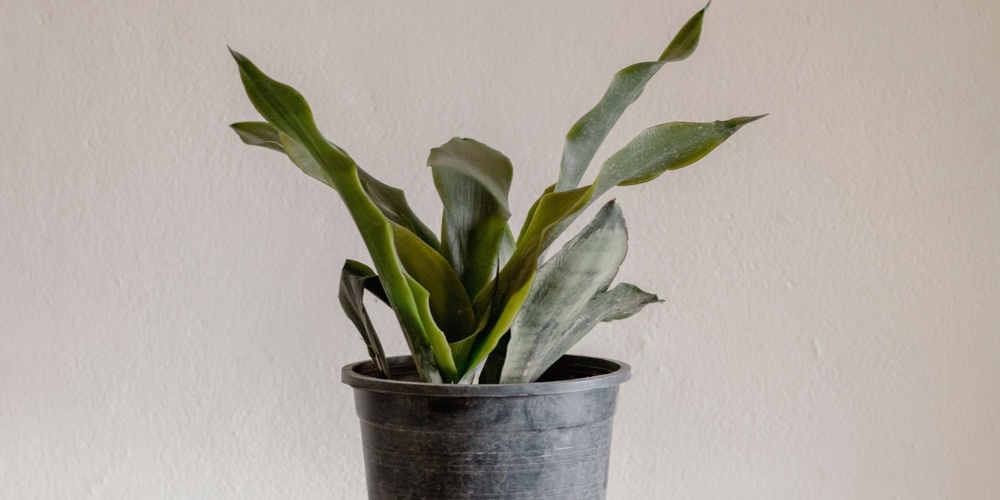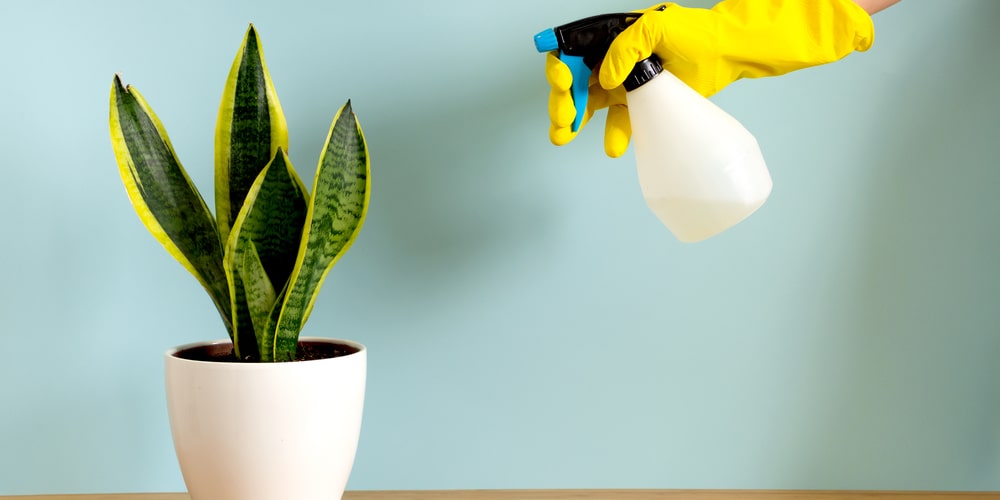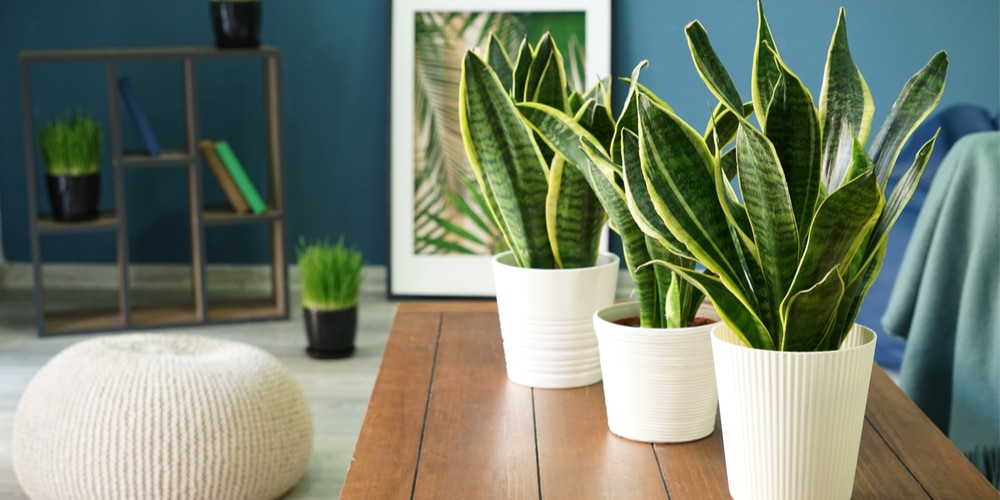The plant snake is also known as Sansevieria, and it belongs to the Lily Family of plants. Other common names for the snake plant include bow-string hemp and mother-in-law’s tongue. It is an excellent plant for people living in apartments, and who love indoor plants. It is one of the most tolerant decorative plants that can survive even in unsuitable conditions. It withstands neglect and abuse and really takes a lot to die.
Snake Plant Yellow + Brown Spot Causes

This plant is beautiful and classic, with sword-like leaves. It purifies the air making your indoor environment, and as long as this plant is in good health, it’s eye-catching and a fantastic décor piece. However, the tips can start turning brown or yellow along with spots that affect its aesthetic appeal. This is caused by numerous things, including fungal diseases, pests, and overwatering. Read on to know more about the causes of these problems.
Fungal Diseases
Snake plants develop brown spots due to fungal infections. Some of the infections include blight and red leaf spots, which lead to the development of reddish brownish lesions. This eventually causes brown spots that reduce the beauty of your snake plant. Fungal diseases thrive in warm and hot environments. You should place the plant in a cool area, but with plenty of light.
Pest infestation
The snake plant is at a higher risk of pest attacks compared to other indoor plants. Some of the pests that gather on this plant are mealybugs and spider mites. They settle on the snake plant in large numbers and suck the sap in it within a short time. Every bite by the pests turns brown, and with time your snake plant develops many brown spots. In severe cases, the leaves curl and lose their beautiful shape.
Chlorine water
Chlorine is used to disinfect water, especially from public supplies. It kills viruses, bacteria, and other pathogens that can cause diseases. However, when chlorinated water is used on a snake plant, the leaves turn brown due to high salt content. It can also affect the root system and lead to insufficient oxygen and nutrient absorption and eventually kills it.
Inconsistent watering
If you overwater or underwater a snake plant, it may develop brown spots, especially at the tips of the leaves. Too much water causes the plant to decay, and the roots rot. If you notice problems caused by overwatering, you can use the following tips to save your snake plant.
- Transfer the plant to another pot and use new dry soil that consists of grit, perlite, coarse sand, and peat moss.
- Cut off the rotten parts of the plant and save the healthy ones.
- Put the healthy leaves in the new soil and place the pot in an area with indirect sunlight. This plant loves the light but doesn’t do well under the sunshine. Also, keep the soil moist and not wet.
- On the other hand, snake plants can get dehydrated if under-watered. Always make sure the soil around your plant is moist and soaking in excess water and the plant will thrive.
Related article: Snake Plant Watering Guide
Too much sunlight
Snake plants are indoor plants and do not need too much sunlight to flourish. If you place the plant in an area with excessive sunshine, it will develop brown spots. This plant does well in a room with indirect sunshine. The brown spots develop because a snake plant absorbs too much energy that it cannot handle. It eventually damages the leaves tissues and hence the appearance of brown spots.
Snake Plant Yellow + Brown Spot Causes: Cold Conditions
Snake plants do not do well in cold conditions. They lose their beauty if left in a place as low as 12 degrees centigrade. The cell sap in the plant freezes due to low temperatures and causes the cell membrane to rupture as frozen water tends to expand. This puts the plant at risk of fungal and bacterial infections. Consequently, the plant develops unsightly brown or yellow spots.
In addition, extreme cold damages the snake plant’s roots, which eventually causes the plant to die. This happens when the water in the soil around it turns into ice. The plant cannot access nutrients and oxygen and therefore end up dying.
Snake Plant Yellow + Brown Spot Causes: Too much fertilizer
The snake plant is resilient and does not need fertilizer to thrive. However, it can do some little fertilizer. Applying excess fertilizer may harm the plant and cause brown and yellow spots on its leaves because the fertilizer tends to burn them. Use as little fertilizer as possible or just let it grow without the fertilizer.
Snake Plant Yellow + Brown Spot Causes:Plant Injury
Any physical injury to your snake plant can cause brown patches. Sometimes, your plant can get injuries during transport. It is common when you buy your plants online. Besides, if you want to move from one house to another, your plant may get affected. When the outer foliage is harmed, it may eventually cause brown spots. Pack properly if you must move it from one location to another to avoid injuries.
Snake Plant Yellow + Brown Spot Causes: Low Humidity
Snake plants do well in humid environments. They do not thrive in dry air, and you notice that the leaves start turning brown at the tips and yellow patches. To ensure your plant is not affected by low humidity, use a humidifier or check humidity levels using a hygrometer. There are digital hygrometers that will quickly tell you if the air around your plant is perfect or not.
While you may have heard that snake plants require daily misting. Most snake plants will cope with the humidity of an average home. Don’t over mist your snake plant as this could cause issues.
Advantages of the snake plant
Taking care of the snake plant is straightforward. Anyone can do it, and it can survive for weeks without proper care. Some of its advantages include:
- Strong and tough for indoors
- Looks good in any room
- It doesn’t take up much space
- Can survive outside during spring
- It doesn’t die easy
Snake Plant Yellow + Brown Spot Causes: Final thoughts
If you want your snake plant to always look beautiful without those ugly yellow and brown spots, keep it away from conditions that affect it. It is easy to maintain and will keep your house in clean air. These plants absorb poisonous gases and release oxygen at night. It is a great plant to keep at home or in your office. It keeps you healthy in addition to beautifying your space.


